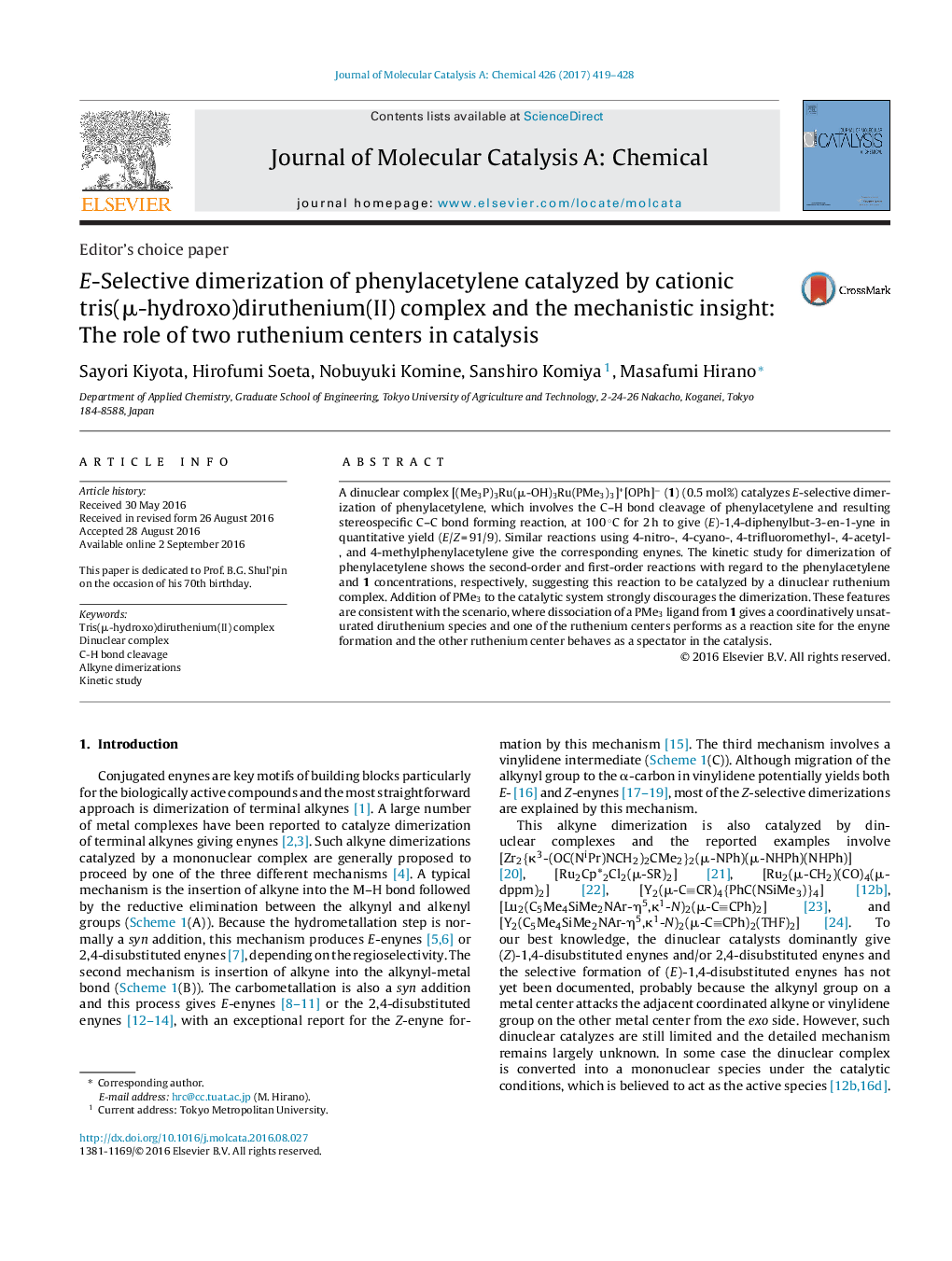| Article ID | Journal | Published Year | Pages | File Type |
|---|---|---|---|---|
| 6456442 | Journal of Molecular Catalysis A: Chemical | 2017 | 10 Pages |
â¢E-Selective dimerization of phenylacetylene has been achieved.â¢Tris(μ-hydroxo)diruthenium(II) acts as the catalyst.â¢The C-H bond cleavage process is involved in this process.â¢Kinetic study suggests this reaction to proceed at the dinuclear complex.â¢This is the first kinetic study for alkyne dimerizations by a dinuclear complex.
A dinuclear complex [(Me3P)3Ru(μ-OH)3Ru(PMe3)3]+[OPh]â (1) (0.5 mol%) catalyzes E-selective dimerization of phenylacetylene, which involves the C-H bond cleavage of phenylacetylene and resulting stereospecific C-C bond forming reaction, at 100 °C for 2 h to give (E)-1,4-diphenylbut-3-en-1-yne in quantitative yield (E/Z = 91/9). Similar reactions using 4-nitro-, 4-cyano-, 4-trifluoromethyl-, 4-acetyl-, and 4-methylphenylacetylene give the corresponding enynes. The kinetic study for dimerization of phenylacetylene shows the second-order and first-order reactions with regard to the phenylacetylene and 1 concentrations, respectively, suggesting this reaction to be catalyzed by a dinuclear ruthenium complex. Addition of PMe3 to the catalytic system strongly discourages the dimerization. These features are consistent with the scenario, where dissociation of a PMe3 ligand from 1 gives a coordinatively unsaturated diruthenium species and one of the ruthenium centers performs as a reaction site for the enyne formation and the other ruthenium center behaves as a spectator in the catalysis.
Graphical abstractDownload high-res image (79KB)Download full-size image
